第43章 THE MENTAL CONDITION OF SAVAGES--CONFUSION WITH NA
After this hasty examination of the confused belief in kinship with animals and other natural objects which underlies institutions in Australia, West and South Africa, North and South America, we may glance at similar notions among the non-Aryan races of India. In Dalton's Ethnology of Bengal, he tells us that the Garo clans are divided into maharis or motherhoods. Children belong to the mahari of the mother, just as (in general) they derive their stock name and totem from the mother's side in Australia and among the North American Indians. No man may marry (as among the Red Indians and Australians) a woman belonging to his own stock, motherhood or mahari. So far the maharis of Bengal exactly correspond to the totem kindred. But do the Maharis also take their names from plants and animals, and so forth? We know that the Killis, similar communities among the Bengal Hos and Mundos, do this. "The Mundaris, like the Oraons, adopt as their tribal distinction the name of some animal, and the flesh of that animal is tabooed to them as food; for example, the eel, the tortoise." This is exactly the state of things in Ashanti. Dalton mentions also a princely family in Nagpur which claims descent from "a great hooded snake".
Among the Oraons he found tribes which might not eat young mice (considered a dainty) or tortoises, and a stock which might not eat the oil of the tree which was their totem, nor even sit in its shade. "The family or tribal names" (within which they may not marry) "are usually those of animals or plants, and when this is the case, the flesh of some part of the animal or the fruit of the tree is tabooed to the tribe called after it." Dalton, p. 63.
Ibid., p. 189.
Ibid., p. 166.
Ibid., p. 254.
An excellent sketch of totemism in India is given by Mr. H. H.
Risley of the Bengal Civil Service:--
The Asiatic Quarterly, No. 3, Essay on "Primitive Marriage in Bengal.""At the bottom of the social system, as understood by the average Hindu, stands a large body of non-Aryan castes and tribes, each of which is broken up into a number of what may be called totemistic exogamous septs. Each sept bears the name of an animal, a tree, a plant, or of some material object, natural or artificial, which the members of that sept are prohibited from killing, eating, cutting, burning, carrying, using, etc."
Here we may note that the origin of exogamy itself is merely part of a strict totemistic prohibition. A man may not "use" an object within the totem kin, nor a woman of the kin. Compare the Greek idiom .
Mr. Risley finds that both Kolarians, as the Sonthals, and Dravidians, as the Oraons, are in this state of totemism, like the Hos and Mundas. It is most instructive to learn that, as one of these tribes rises in the social scale, it sloughs off its totem, and, abandoning the common name derived from bird, beast, or plant, adopts that of an eponymous ancestor. A tendency in this direction has been observed by Messrs. Fison and Howitt even in Australia.
The Mahilis, Koras and Kurmis, who profess to be members of the Hindu community, still retain the totemistic organisation, with names derived from birds, beasts and plants. Even the Jagannathi Kumhars of Orissa, taking rank immediately below the writer-caste, have the totems tiger, snake, weasel, cow, frog, sparrow and tortoise. The sub-castes of the Khatlya Kumhars explain away their totem-names "as names of certain saints, who, being present at Daksha's Horse-sacrifice, transformed themselves into animals to escape the wrath of Siva," like the gods of Egypt when they fled in bestial form from the wrath of Set.
Among the non-Aryan tribes the marriage law has the totemistic sanction. No man may marry a woman of his totem kin. When the totem-name is changed for an eponym, the non-Aryan, rising in the social scale, is practically in the same position as the Brahmans, "divided into exogamous sections (gotras), the members of which profess to be descended from the mythical rishi or inspired saint whose name the gotra bears". There is thus nothing to bar the conjecture that the exogamous gotras of the whole Brahmans were once a form of totem-kindred, which (like aspiring non-Aryan stocks at the present day) dropped the totem-name and renamed the septs from some eponymous hero, medicine-man, or Rishi.
Constant repetition of the same set of facts becomes irksome, and yet is made necessary by the legitimate demand for trustworthy and abundant evidence. As the reader must already have reflected, this living mythical belief in the common confused equality of men, gods, plants, beasts, rivers, and what not, which still regulates savage society, is one of the most prominent features in mythology. Porphyry remarked and exactly described it among the Egyptians--"common and akin to men and gods they believed the beasts to be." The belief in such equality is alien to modern civilisation. We have shown that it is common and fundamental in savagery. For instance, in the Pacific, we might quote Turner,